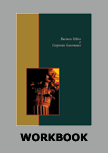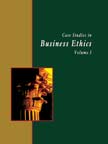The Johnson & Johnson Tylenol Controversies




|
|
ICMR HOME | Case Studies Collection
Case Details:
Case Code : BECG015
Case Length : 13 Pages
Period : 1975 - 2001
Pub. Date : 2002
Teaching Note : Available
Organization : Johnson & Johnson
Industry : Drugs and Pharmaceuticals
Countries : USA
To download The Johnson & Johnson Tylenol Controversies case study (Case Code:
BECG015) click on the button below, and select the case from the list of available cases:

Price:
For delivery in electronic format: Rs. 300;
For delivery through courier (within India): Rs. 300 + Rs. 25 for Shipping & Handling Charges
»
Business Ethics Case Studies
» Case Studies Collection
» ICMR Home
» Short Case Studies
» View Detailed Pricing Info
» How To Order This Case
» Business Case Studies
» Case Studies by Area
» Case Studies by Industry
» Case Studies by Company

Please note:
This case study was compiled from published sources, and is intended to be used as a basis for class discussion. It is not intended to illustrate either effective or ineffective handling of a management situation. Nor is it a primary information source.
|
|
<< Previous
Excerpts
The Fall and Rise of Tylenol
Tylenol received a major setback in late 1982 when it was found that many bottles of Tylenol extra strength capsules were laced with cyanide. The publicity about the poisoned capsules caused a nationwide panic.
|
A hospital in Chicago received 700 telephone calls about Tylenol in just one day. People in cities across the US were admitted to hospitals on suspicion of cyanide poisoning. Within the first 10 days of the crisis, J&J received 1,411 telephone calls. J&J acted immediately after the first reports of deaths came in.
The company immediately alerted consumers across the US, via the media, not to consume any type of Tylenol product. The police drove through Chicago where the incidents were first reported, announcing the warning over loudspeakers, while all the three national television networks reported the deaths on their evening news broadcasts...
|
|
The Tylenol Overdose Controversy
In 1989, J&J faced yet another problem when deaths occured due to Tylenol overdoses. In 1989, five-year-old Lacy Keele died after being given four extra strength Tylenol tablets in one day twice what she should have taken. In early 1990s, fourteen-month-old Sophie Regosin-Hodges was given an overdose of Tylenol, which severely damaged her liver.
As per the pediatrician's advice, Sophie was given infant Tylenol drops.
|
|
The infant drops were three and half times more stronger than the children's medicine. Though Sophie survived with a transplant of liver tissue from her father she was put on immunosuppressant drugs for the rest of her life. In another incident reported in 1993, Antonio Benedi, an alcoholic, took ten extra strength Tylenol in four days. He survived only after a liver transplant. In the following years, there were hundreds of deaths and severe liver damages that were all attributed to Tylenol's main ingredient - acetaminophen. Acetaminophen was used to treat mild to moderate pain and fever including simple headaches, muscle aches and mild form of arthritis. The drug was more useful for patients who could not use Aspirin or Ibuprofen, because of gastrointestinal ulcers or bleeding disorders... |
Making the Public Aware of Risks
In September 1997, the FDA's OTC drug advisory committee
recommended additional changes in the labeling for acetaminophen used in
painkillers. The FDA wanted manufacturers to explain the correct dosages
for children under two years, instead of simply directing parents to consult a
doctor before using the medication. In October 1997, J&J announced that it would inform parents about Tylenol's side effects on children through labels and advertisements (See Table III). The new labels cautioned consumers against overdose. From November 1997, J&J also released magazine and TV ads informing parents about correct dosages...
Exhibits
Exhibit I: Comparitive Study: Aspirin, Acetaminophen and Ibuprofen
Exhibit II: Tylenol's Product Line
Exhibit III: J&J's Product Segments
Exhibit IV: J&J's 'Our Credo'
Exhibit V: Brands of Pain Killers Containing Acetaminophen
Exhibit VI: Harmful Effects of Overdose of Acetaminophen and Other Analgesics
|
|





